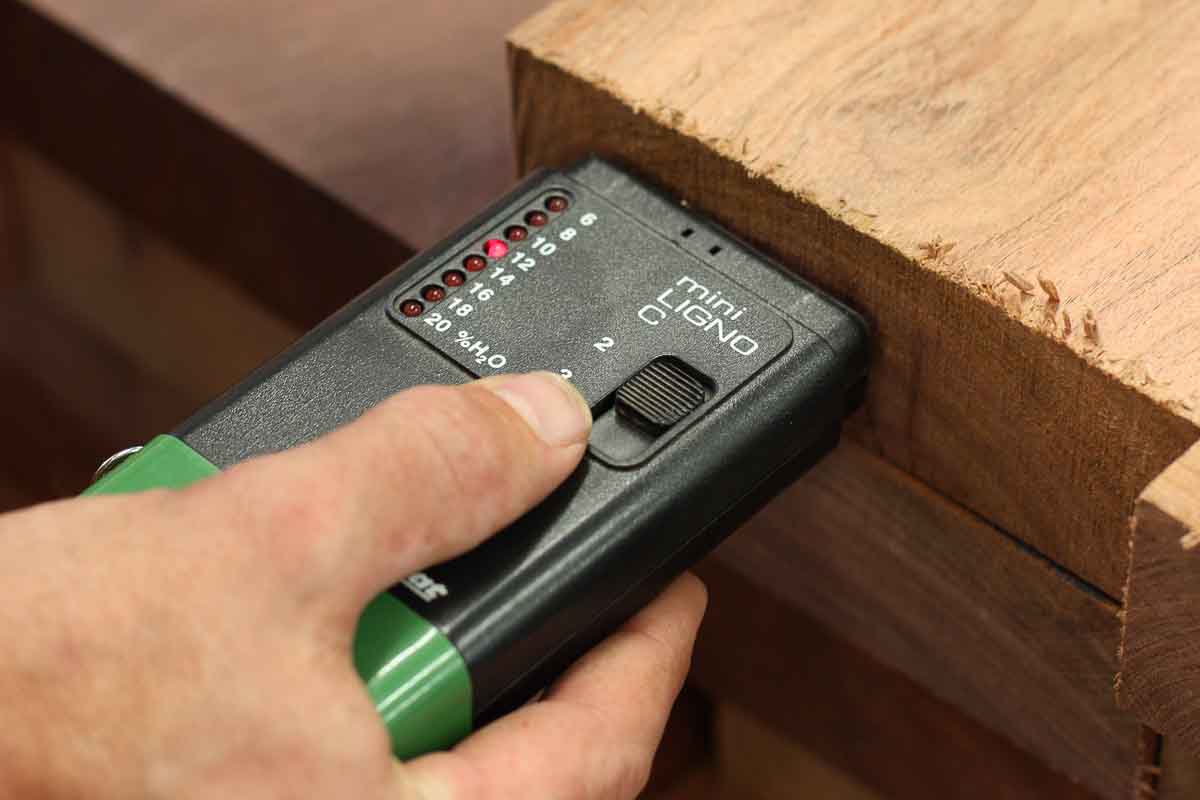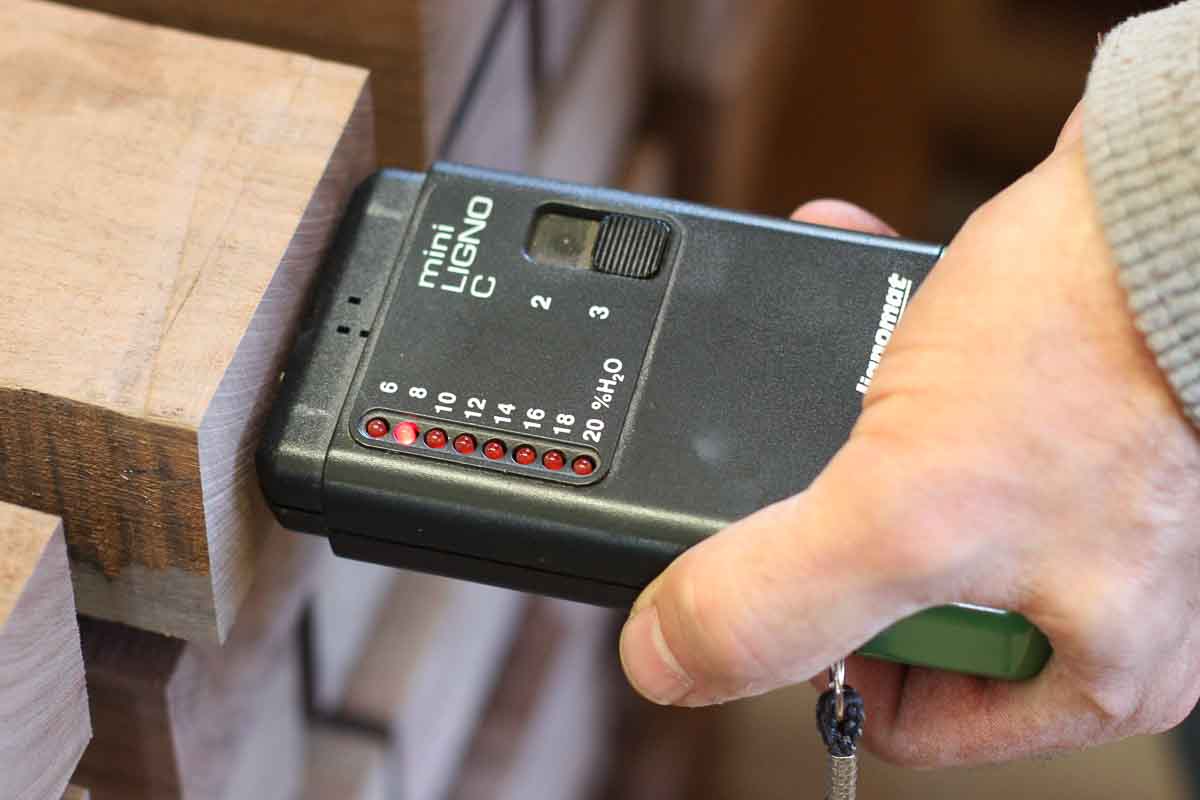Wood and Moisture
Wood changes dimensions as its moisture content changes.
It shrinks as it loses moisture and swells as it gains.
This is the bane of woodworkers.
The Change of Dimension
Water moves up the trunks of trees through the pores and fibers of the wood--drawn from the ground by the transpiring leaves. When a tree is alive, about 30% of the weight of the wood is water. We say such wood is at 30% moisture content.
After a tree is cut into lumber, water will move in or out of the wood until the wood reaches equilibrium with its environment, that is, until no water (liquid or vapor) moves in or out.
Imagine that you have a white oak board on your porch, and because of the temperature and relative humidity out there, it comes to equilibrium at 14% moisture content and measures 12" wide. Then you bring it inside for the winter. You turn up the heat driving the relative humidity to 25% and keeping it there. The wood comes to equilibrium at 5% moisture content and the board measures 11 5/8" in width. (The wood fibers do not change in length. All change in dimension is across, or perpendicular, to the grain.) Finishes slow this movement of moisture in and out of wood, but do not stop it.
How We Deal With It
Since the wood in most homes in the US will come to equilibrium between 6 and 11% moisture content, we are careful to build with wood that has 8-9% moisture content to reduce the potential change in dimension.
We measure the moisture content, we dry the wood if necessary, and we maintain optimum conditions in the shop.
When first cutting the lumber, we check the moisture content with the moisture meter.

The meter reads 12%. The wood is too wet to work.

The meter reads 8%. Wood is Ready to Work
If the moisture is so high that sitting around in the shop won't ensure that it comes to working equilibrium, we rough cut the parts and dry them in our kiln.

We keep the shop at about 75 degrees and 45% relative humidity. Under these conditions, wood comes to and keeps a moisture content about 9%.
We cut parts and laminations to size and let them stabilize and acclimate before gluing.
We allow time for the water in the glue to evaporate before we work assemblies.
Note the chair seats stacked so air can freely circulate.

Risks
The furniture can stand periods of unusually high or low humidity, but continual exposure to extremes may cause cracks, raised grain, dull finishes, or worse. In case of abandonment outdoors or in moldy garages or sheds, loose joints and delamination may occur.
Advice to Patrons
We want our work to be fine, but we do not want it to be so precious that it must be kept in a museum.
While our furniture will not be structurally damaged by the normal range of moisture contents it is likely to encounter (and is so guaranteed), you may notice some effects of wood movement. We often work one piece of wood seamlessly into another as our rocking chair arms are shaped and faired to flow from the back legs. Worked and shipped at 8% moisture content, the joint cannot be felt. After several seasons of humidity swings or maybe after one substantial one, you may feel a slight ridge or offset. This is normal and inherent, and poses no structural risk.
Common sense will see you through. Keep the furniture in the house unless it is designed for outdoors (See the Weeks Rocker for the Porch). Close the house when the weather is extreme. If your lips are chapped, add moisture to the air. If you have it, run the AC during times of high temperature and humidity. Relax.